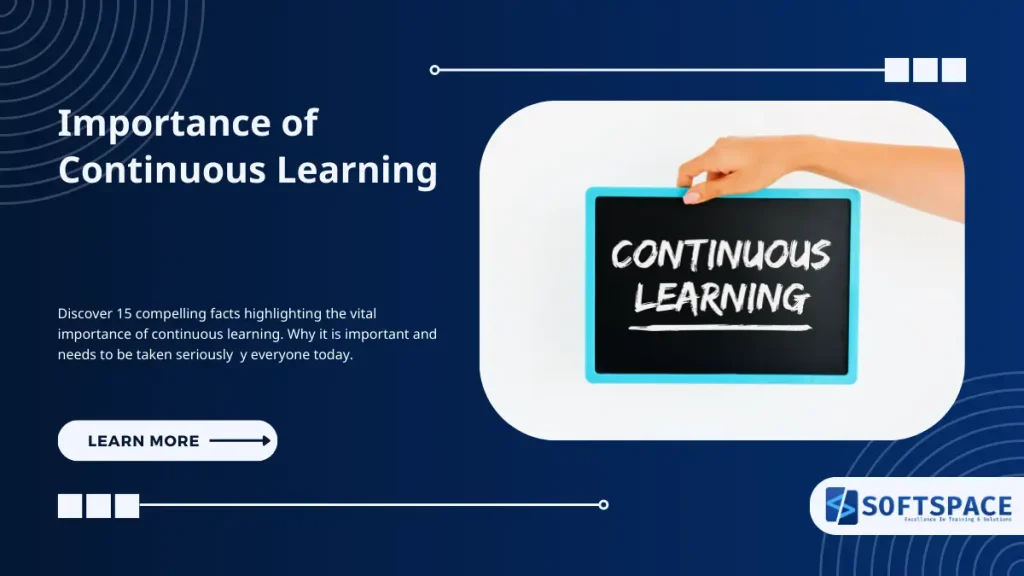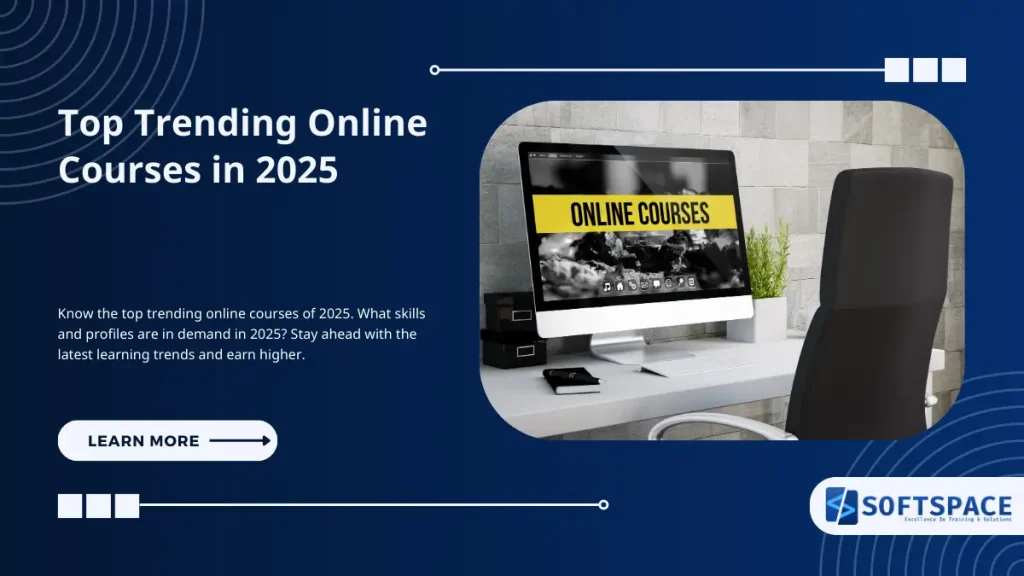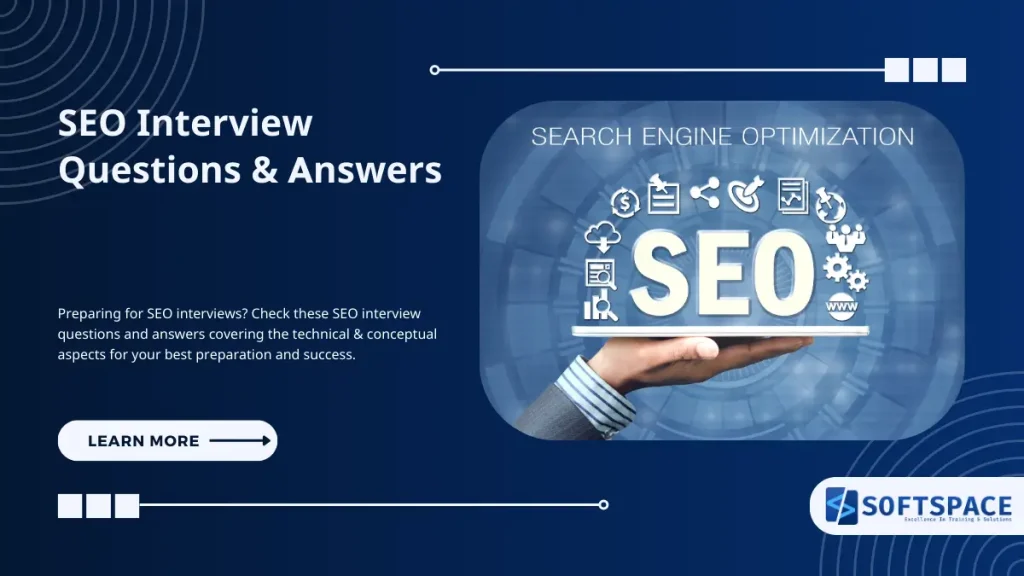Imagine this—you’ve spent years mastering your job, feeling confident in your skills, and then suddenly, everything changes. New technologies emerge, industry trends shift, and what once made you an expert now feels outdated. Sound familiar? That’s because, in today’s fast-paced world, standing still is the fastest way to fall behind. So, the importance of continuous learning cannot be ignored.
Continuous learning isn’t just a buzzword; it’s a necessity. Whether you’re an ambitious professional looking to grow, a business aiming to stay competitive, or simply someone who loves to evolve, embracing lifelong learning can open doors you never even knew existed. In this blog, we’ll explore why continuous learning is crucial for personal and professional success and how it can keep you ahead in an ever-changing world.
In our rapidly evolving world, the concept of continuous learning has become increasingly crucial. This ongoing process of expanding one’s knowledge and skillset is no longer a luxury but a necessity for personal and professional growth. Continuous learning encompasses a wide array of activities, from formal education to informal experiences, all aimed at enhancing one’s capabilities and understanding.
At its core, continuous learning is about embracing a mindset of perpetual improvement. It’s the recognition that learning doesn’t cease once formal education ends, but rather continues throughout one’s lifetime. This approach to learning is characterised by its flexibility and adaptability, allowing individuals to acquire new knowledge and skills as needed, often in response to changing environments or emerging challenges.
The scope of continuous learning is vast and varied. It can involve structured courses, workshops, or seminars, but it also includes less formal methods such as reading, observing colleagues, engaging in new experiences, or even casual conversations that broaden one’s perspective. The key is the consistent effort to expand one’s horizons and capabilities.
In the professional realm, continuous learning takes on particular significance. As industries evolve and new technologies emerge, the ability to adapt and acquire new skills becomes paramount. Organisations that foster a culture of continuous learning often find themselves better equipped to navigate change and maintain a competitive edge in their respective markets.

The Fundamental Principles of Continuous Learning
To truly grasp the significance of continuous learning, it’s essential to understand its underlying principles. These foundational elements form the bedrock upon which effective learning strategies are built, ensuring that the process is not just ongoing, but also meaningful and impactful.
Firstly, accessibility is a key principle. For continuous learning to be effective, opportunities for growth and development must be readily available. This means creating an environment where learning resources are easily accessible, whether through digital platforms, in-person training sessions, or a combination of both. The goal is to remove barriers to learning, making it possible for individuals to engage in educational activities whenever the need or desire arises.
Another crucial principle is the application of knowledge. Continuous learning isn’t just about absorbing information; it’s about putting that knowledge into practice. This principle emphasises the importance of creating opportunities for learners to apply their newly acquired skills and knowledge in real-world scenarios. By doing so, individuals can reinforce their learning, identify areas for improvement, and gain confidence in their abilities.
Sustainability is also a fundamental aspect of continuous learning. The process should be designed to be repeatable and maintainable over the long term. This involves creating a culture that values and supports ongoing education, as well as implementing practices that make learning a natural part of daily routines rather than a sporadic or burdensome activity.
Collaboration is another key principle. While individual learning is important, the power of collective knowledge shouldn’t be underestimated. Continuous learning strategies should incorporate opportunities for individuals to share their knowledge, perspectives, and experiences with others. This collaborative approach not only enhances the learning experience but also fosters a sense of community and shared purpose.
Lastly, the principle of feedback is crucial for effective continuous learning. Regular, constructive feedback mechanisms should be in place, allowing learners to gauge their progress, identify areas for improvement, and adjust their learning strategies accordingly. This feedback should come from various sources, including instructors, peers, and self-reflection, providing a well-rounded view of one’s development.
The Multifaceted Benefits & Importance of Continuous Learning
Continuous learning offers significant advantages for both individuals and organisations. For individuals, it enhances career growth by keeping skills relevant, improving job performance, and increasing opportunities. It also fosters personal fulfilment, boosts self-esteem, and cultivates a growth mindset that views challenges as learning opportunities.
For organisations, continuous learning drives productivity, innovation, and adaptability. A well-trained workforce can embrace industry changes and new technologies, ensuring long-term success. It also enhances employee engagement and retention, as workers feel valued when their development is prioritised. Additionally, continuous learning fosters innovation by bringing fresh ideas and perspectives into the workplace.
Moreover, it plays a critical role in risk management and compliance, ensuring employees stay updated with evolving regulations and industry standards. Ultimately, a culture of continuous learning strengthens both individual careers and organisational success.
Strategies for Implementing Continuous Learning
Implementing continuous learning requires clear objectives, diverse learning methods, and a supportive environment. Setting SMART learning goals ensures alignment with both individual growth and organisational needs, providing a structured roadmap for development.
Diversifying learning approaches is crucial, combining formal training, e-learning, mentoring, job rotations, and collaborative projects to cater to different learning styles. A supportive learning culture is essential, with leaders actively encouraging and modelling continuous development. Integrating learning into daily work routines—through dedicated learning time, knowledge sharing, and performance reviews—helps sustain engagement.
Technology plays a key role, with learning management systems and digital tools making education more accessible and trackable. Encouraging reflection and real-world application of new skills ensures lasting impact. Finally, recognising and rewarding learning efforts—through acknowledgements, career growth opportunities, or milestone celebrations—reinforces motivation and long-term commitment to continuous learning.
Stats related to the Importance of Continuous Learning
Continuous learning is crucial for both personal and organizational growth in today’s rapidly evolving work environment. Here are some key statistics highlighting its importance:
- Employee Retention and Engagement:
- 94% of employees would stay longer at a company that invests in their career development.
- 76% of employees are more likely to stay with an organization offering continuous training.
- Engaged employees show a 92% boost in job engagement when they receive training.
- Performance and Productivity:
- Continuous learning can increase productivity by 25% and overall performance by 40%.
- Regular training reduces mistakes by 35%, improving efficiency.
- Adaptability and Competitiveness:
- 87% of companies face or expect skill gaps, emphasizing the need for continuous learning.
- Continuous learning helps employees adapt to evolving industries and enhances job performance.
- Career Growth and Satisfaction:
- Continuous learning is linked to faster career advancement and higher salary potential.
- 54% of employees believe ongoing training is essential for their career development.
- 52% of workers need new skills within the next year to continue their careers.
- Business Growth and Innovation:
- Companies that focus on continuous learning experience faster growth and improved innovation.
- Continuous learning encourages experimentation and learning from mistakes, aiding business expansion.
Overcoming Challenges in Continuous Learning
While continuous learning offers clear benefits, implementing it effectively comes with challenges. Resistance to change is common, as individuals may feel comfortable with their current skills or fear new learning methods. Clear communication, leadership support, and encouragement can help overcome this hesitation.
Time constraints are another obstacle, with busy work schedules making it hard to prioritise learning. Organisations can integrate learning into workflows, allocate dedicated time, and encourage microlearning. Maintaining long-term motivation is also difficult, but setting short-term goals, celebrating achievements, and linking learning to tangible outcomes can sustain engagement.
The rapid evolution of knowledge requires learning agility—the ability to learn, unlearn, and relearn. Encouraging a mindset shift towards continuous learning helps individuals stay adaptable. Budget limitations can be addressed by leveraging internal expertise, free online resources, and cost-effective training solutions.
Ensuring relevant and high-quality learning content is crucial, requiring careful curation to align with organisational goals. Finally, measuring the impact of learning initiatives can be complex. Organisations should track key performance indicators to assess effectiveness and drive continuous improvement. Addressing these challenges ensures a sustainable and impactful learning culture.
The Role of Technology in Continuous Learning
In the digital age, technology plays a pivotal role in facilitating and enhancing continuous learning. From e-learning platforms to artificial intelligence-powered personalised learning experiences, technological advancements are revolutionising the way we approach ongoing education and skill development.
One of the most significant contributions of technology to continuous learning is increased accessibility. Online learning platforms and mobile apps have made it possible for individuals to access educational content anytime, anywhere. This flexibility is particularly valuable in today’s fast-paced work environments, allowing learners to fit education into their busy schedules.
Learning management systems (LMS) have become essential tools for organisations implementing continuous learning strategies. These platforms provide a centralised hub for managing, delivering, and tracking learning activities. They often include features such as course catalogues, progress tracking, and reporting tools, making it easier for both learners and administrators to manage the learning process.
Artificial intelligence and machine learning are increasingly being used to personalise learning experiences. These technologies can analyse a learner’s performance, preferences, and goals to recommend relevant content and adjust the difficulty level of learning materials in real-time. This personalised approach can significantly enhance engagement and learning outcomes.
Virtual and augmented reality technologies are opening up new possibilities for immersive learning experiences. These tools can simulate real-world scenarios, allowing learners to practice skills in a safe, controlled environment. This is particularly valuable for training in high-risk or complex situations.
Social learning platforms and collaborative tools are leveraging the power of peer-to-peer learning. These technologies facilitate knowledge sharing, discussion, and collaboration among learners, creating a more interactive and engaging learning experience.
Microlearning, enabled by mobile technologies, is gaining popularity as a way to deliver bite-sized learning content. This approach aligns well with the principles of continuous learning, allowing learners to engage in short, focused learning activities that can be easily integrated into their daily routines.
Data analytics is playing an increasingly important role in continuous learning strategies. By analysing learning data, organisations can gain insights into the effectiveness of their learning programmes, identify skill gaps, and make data-driven decisions about future learning initiatives.
While technology offers numerous benefits for continuous learning, it’s important to remember that it’s a tool, not a solution in itself. The effective use of technology in learning requires careful planning, ongoing support, and a clear understanding of learning objectives and learner needs.
Continuous Learning in Different Organisational Contexts
Continuous learning varies by organisation, shaped by structure, resources, and goals. Large corporations take a structured approach with dedicated training programmes and advanced technologies but struggle with agility. SMEs adopt flexible, resourceful strategies like peer learning and on-the-job training to stay adaptable. Start-ups embed rapid, self-directed learning into their culture, though sustaining long-term strategies can be challenging.
Non-profits leverage cost-effective learning due to budget constraints, driven by mission-driven motivation. Public sector organisations balance specialised knowledge with public service skills but face bureaucratic hurdles. Educational institutions must ensure staff stay updated with evolving pedagogy and technology while fostering lifelong learning.
Regardless of the context, successful continuous learning aligns with organisational goals, has leadership support, fosters a learning culture, and undergoes continuous improvement.
Measuring the Impact of Continuous Learning
Assessing the effectiveness of continuous learning initiatives is crucial for justifying investment, guiding improvements, and ensuring that learning efforts align with organisational goals. However, measuring the impact of learning can be challenging, particularly when it comes to quantifying intangible benefits.
One approach to measuring impact is through the Kirkpatrick Model, which evaluates learning at four levels: reaction, learning, behaviour, and results. This model allows organisations to assess not just learner satisfaction and knowledge acquisition, but also the application of learning in the workplace and its impact on business outcomes.
Key performance indicators (KPIs) can be valuable tools for measuring the impact of continuous learning. These might include metrics such as employee productivity, customer satisfaction scores, innovation rates, or reduction in errors. The specific KPIs used should align closely with the organisation’s strategic objectives and the goals of the learning initiatives.
Return on Investment (ROI) calculations can provide a quantitative measure of the financial impact of learning initiatives. This involves comparing the costs of learning programmes with the financial benefits they generate. While ROI can be a powerful metric, it’s important to recognise that not all benefits of learning can be easily quantified in financial terms.
Qualitative assessments, such as employee surveys, interviews, and focus groups, can provide valuable insights into the perceived value and impact of learning initiatives. These methods can capture benefits that may be difficult to quantify, such as increased job satisfaction or improved team collaboration.
Skill assessments and competency mapping can help track the development of specific skills and knowledge over time. This can be particularly useful for identifying skill gaps and measuring progress towards learning objectives.
Learning analytics, enabled by modern learning management systems and other educational technologies, can provide detailed data on learner engagement, progress, and performance. This data can be invaluable for identifying trends, personalising learning experiences, and continuously improving learning programmes.
It’s important to note that the impact of continuous learning may not always be immediately apparent. Some benefits, such as improved innovation or adaptability, may only become evident over time. Therefore, a long-term approach to measuring impact is often necessary.
Finally, it’s crucial to create a feedback loop where the insights gained from measuring impact are used to refine and improve learning strategies. This ensures that continuous learning initiatives remain relevant, effective, and aligned with organisational needs.
Benefits of Continuous Learning
Continuous learning in the workplace helps employees expand their skills, retain knowledge, generate fresh ideas, boost morale, and improve performance. For individuals, it offers several advantages:
- It supports career growth and development.
- It helps in obtaining or updating professional licences and certifications.
- It encourages the exploration of new opportunities and perspectives in both work and personal life.
- It enhances marketable skills through upskilling and reskilling.
For organisations, continuous learning provides additional benefits:
- It helps achieve business goals.
- It fosters innovation and forward-thinking.
- It makes employees feel valued.
- It reduces costs, as training existing employees is cheaper than hiring and training new ones.
- It improves competitiveness by enhancing employee skills and productivity.
Challenges of Continuous Learning
Implementing continuous learning programmes can be challenging. Some common obstacles include:
- Resistance to new skills: Employees may resist learning if they find topics uninteresting or difficult. Employers can address this by offering alternative training methods.
- Changing business needs: Skills learned today may become irrelevant if business needs evolve quickly.
- Time constraints: Employees may struggle to fit training into their schedules. Breaking courses into smaller lessons can help.
- Limited budgets: Some employers may not afford expensive training programmes, forcing them to choose less comprehensive options.
- Lack of personalisation: Employees learn in different ways, but many training programmes are not flexible. Customised learning plans work best.
Models of Continuous Learning
Companies use different models to structure continuous learning. One example is Deloitte’s Continuous Learning Model, which categorises learning into three types:
- Immediate: Skills needed for success in the current role.
- Intermediate: Skills that help employees grow in their current position.
- Transitional: Skills required for long-term career advancement or career changes.
Ways Employees Learn
Employees acquire knowledge through different methods:
- Education: Formal learning in classrooms or online courses with structured curriculums.
- Experience: Learning through work events, projects, and assignments.
- Exposure: Gaining knowledge through social interactions and relationships.
- Environment: Using workplace tools and systems to support learning.
Strategies for Continuous Learning
Different strategies help employees continuously develop their skills:
- Structured Learning: Formal methods like online courses, seminars, and workshops designed for specific goals.
- Social Learning: Learning by interacting with colleagues through discussions, mentoring, and teamwork.
- Self-Directed Learning: Independent learning through research, reading, and practical exercises.
Building a Continuous Learning Strategy
To create an effective learning strategy, organisations should:
- Plan: Set clear goals, define who the training is for, and maintain open communication between managers and employees.
- Lead by Example: Management should actively support and promote continuous learning.
- Ensure Sustainability: Provide ongoing resources to maintain learning initiatives.
Tools for Continuous Learning
Companies can use various tools to enhance learning, such as:
- Learning Management Systems (LMS): Platforms that organise and deliver training content.
- Virtual Learning Environments: Tools that support remote and hybrid learning.
- Collaborative Features: Forums, gamification, and interactive activities that encourage engagement.
Continuous Learning in Artificial Intelligence and Machine Learning
Continuous learning is crucial in AI and machine learning (ML). ML models must keep learning from new data to remain accurate. Unlike static learning, which assumes data remains the same, continuous learning allows AI systems to adapt to changing information.
Developers monitor and retrain ML models to improve their accuracy. However, this process requires significant time, effort, and resources. Despite these challenges, continuous learning ensures AI systems stay efficient and relevant.
Continuous Learning vs Lifelong Learning
Although often used interchangeably, continuous learning and lifelong learning have different meanings.
- Continuous Learning: Organised training provided by employers or institutions to improve job-related skills.
- Lifelong Learning: Self-driven learning for personal development, not necessarily linked to a job.
For example, an employee taking a company-sponsored coding course for work is engaging in continuous learning. However, if the same person learns a programming language for personal interest without employer involvement, it is lifelong learning.
The Future of Continuous Learning
As we look towards the future, it’s clear that continuous learning will play an increasingly critical role in personal and organisational success. Several trends and developments are shaping the evolution of continuous learning, presenting both opportunities and challenges.
Artificial Intelligence (AI) and machine learning are set to revolutionise the learning landscape. These technologies will enable increasingly personalised learning experiences, adapting in real-time to individual learner needs and preferences. AI-powered virtual tutors and chatbots may become common, providing instant support and guidance to learners.
The concept of ‘learning in the flow of work’ is likely to gain further traction. This approach integrates learning seamlessly into daily work processes, making it a natural part of job performance rather than a separate activity. Technologies that can deliver bite-sized learning content at the point of need will be crucial in supporting this trend.
Virtual and Augmented Reality (VR/AR) technologies are expected to create more immersive and interactive learning experiences. These tools will allow for realistic simulations and practice scenarios, particularly valuable in fields where hands-on experience is crucial but difficult or dangerous to obtain in real-world settings.
The rise of the gig economy and changing career patterns will necessitate more flexible and adaptable learning approaches. Individuals may need to rapidly acquire new skills as they move between different roles and industries. This will likely lead to an increased focus on modular, stackable learning credentials that can be quickly obtained and easily recognised across different contexts.
Neuroscience and cognitive psychology research will continue to inform learning strategies, leading to more effective approaches based on how the brain processes and retains information. This may result in learning methods that are more aligned with natural cognitive processes, potentially increasing the efficiency and effectiveness of learning.
The growing focus on soft skills and emotional intelligence in the workplace will likely be reflected in continuous learning programmes. As automation takes over more routine tasks, uniquely human skills such as creativity, critical thinking, and emotional intelligence will become increasingly valuable.
Sustainability and environmental concerns may influence the content and delivery of continuous learning. There may be an increased focus on skills related to sustainable practices, as well as a shift towards more environmentally friendly learning delivery methods.
The concept of ‘learning organisations’ is likely to evolve further, with continuous learning becoming even more deeply embedded in organisational cultures and strategies. This may lead to new organisational structures and roles designed to facilitate ongoing learning and knowledge sharing.
As the pace of change continues to accelerate, the ability to quickly learn, unlearn, and relearn will become increasingly crucial. The future of continuous learning will likely focus not just on acquiring specific knowledge and skills, but on developing learning agility and adaptability.
Conclusion: Embracing the Continuous Learning Journey
In conclusion, the importance of continuous learning in today’s rapidly evolving world cannot be overstated. As we’ve explored throughout this article, continuous learning is not just a nice-to-have, but a fundamental necessity for individuals and organisations aiming to thrive in an increasingly complex and dynamic environment.
The benefits of continuous learning are manifold, ranging from enhanced individual performance and career prospects to improved organisational adaptability and innovation. By fostering a culture of ongoing learning and development, organisations can build resilient, agile workforces capable of navigating the challenges of the future.
However, implementing effective continuous learning strategies is not without its challenges. It requires careful planning, sustained commitment, and a willingness to adapt approaches based on feedback and changing needs. The role of technology in facilitating and enhancing learning experiences will continue to grow, offering new possibilities but also necessitating ongoing adaptation to new tools and platforms.
As we look to the future, it’s clear that the landscape of continuous learning will continue to evolve. Emerging technologies, changing work patterns, and shifting skill requirements will shape the way we approach ongoing education and development. The ability to embrace this evolution and remain committed to lifelong learning will be crucial for success in the years to come.
Ultimately, continuous learning is not just about acquiring new knowledge or skills; it’s about cultivating a mindset of curiosity, adaptability, and growth. It’s about recognising that in a world of constant change, the most valuable skill is the ability to learn itself.
As individuals and organisations navigate the complexities of the modern world, embracing continuous learning as a core value and practice will be key to unlocking potential, driving innovation, and achieving sustainable success. The learning journey is never truly complete, and therein lies its greatest value – the endless potential for growth, discovery, and transformation.

13+ Yrs Experienced Career Counsellor & Skill Development Trainer | Educator | Digital & Content Strategist. Helping freshers and graduates make sound career choices through practical consultation. Guest faculty and Digital Marketing trainer working on building a skill development brand in Softspace Solutions. A passionate writer in core technical topics related to career growth.



